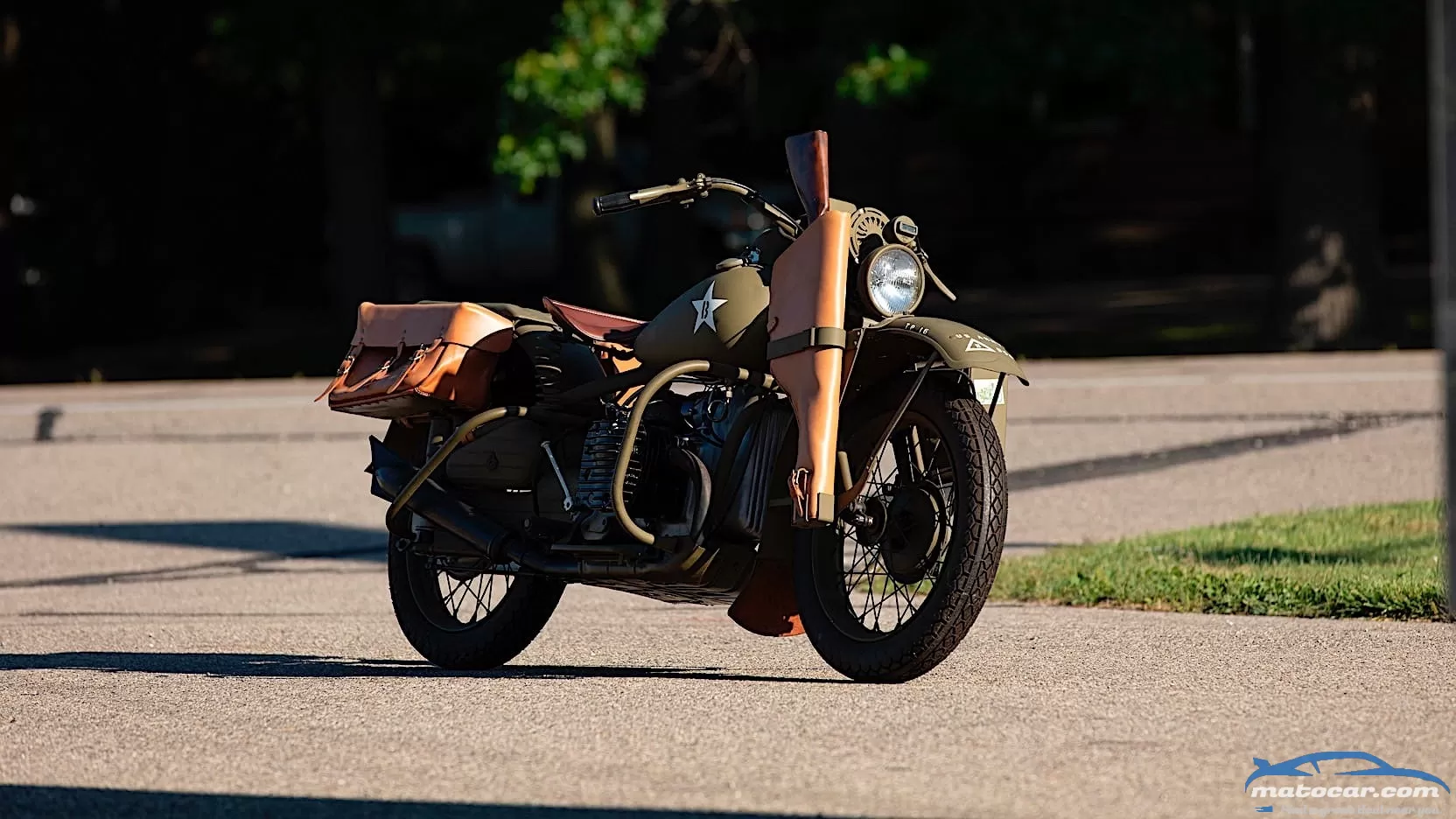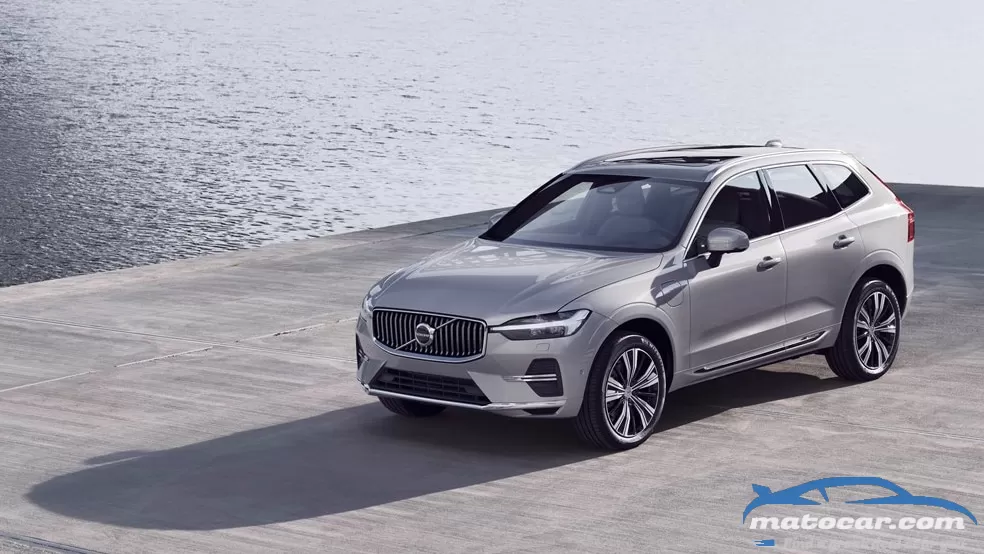Harley-Davidson Tried to Kick Nazi Ass, But Copied the Wrong Motorcycle

Mecum is auctioning a rare 1942 Harley-Davidson XA military motorcycle from World War II that boasts many early engineering firsts in the company's long history. Developed after the U.S. and its allies came up against superior BMW motorcycles during the war, it aimed to beat the Nazis at their own game. Now one newly restored example can be yours.
The XA was an attempt to overcome the Nazis' all-terrain superiority, particularly in North Africa, and to address issue that American bikes had involving chains in rough terrain. Harley landed on a shaft drive setup, solving that problem. And the most expedient way to engineer a shaft-drive bike was to reverse-engineer an existing one, like the excellent overhead-cam BMW R75M used by the enemy. Perhaps unable to get its hands on an R75M, the XA copied the civilian flathead R71, which wasn't quite as well-optimized for the task.
Despite being a copycat, be reassured that the XA is still a true Harley-Davidson. Around 1,000 XAs were built in Milwaukee for the U.S. Army during the war, according to the Mecum, and it resulted in many production firsts for the company. It is claimed to be Harley-Davidson's first shaft-drive, four-speed, foot-shift and hand-clutch motorcycle, and also the first equipped with two carburetors. The motor's opposed cylinders were positioned "across the frame" for improved cooling in the wind compared to Harley's longitudinal V-twin designs of the time. It was also the first Harley to feature a rear-suspension plunger, and had a top speed of over 60 MPH back in 1942. The XA Type II (this example is a Type I) got Harley's first telescopic forks, which didn't reappear on Harley-Davidson designs again until years after the war.
The XA, innovative as it was relative to Harley's native bikes, wasn't a success. Consider that Harley produced over 80,000 units of its V-twin motorcycles during the war, while the XA was only ordered for testing. Ultimately, the Army declined to order any more, and its role fell to the Jeep, far superior for general purpose tactical mobility. You may find it a little more adaptable to suit your interests, which are hopefully more peaceful.
This isn't the first time this exact motorcycle has been auctioned in recent years. It appears to have previously been auctioned by Mecum in 2015, according to the matching plate numbers in both sets of images, where it failed to meet reserve at a high bid of $30,000. It was expected to go for as much as $50,000, but this time it's offered with no reserve.
The restoration finished this XA with leather saddle-bags, a beautiful speedometer detail, and according to the listing, the auction lot includes a special mounted case for a period-appropriate "non-firing" Thompson sub-machine gun that is apparently included in the deal. The auction is in Vegas, in case that wasn't obvious.
Whatever else this XA is, it's a newly restored WWII Harley-Davidson that's also particularly rare and interesting, and at least we know the bike should run very cool and catch plenty of attention. The lot is up for auction with no reserve until Jan. 29, according to the Mecum website.
You may also like
WHAT IT IS: An all-electric performance model, reported to be a sedan and effectively a replacement for the two-door Camaro. It may retain the Camaro name, as Chevrolet has recently used the Blazer moniker on a crossover that bears no resemblance to historical models.WHY IT MATTERS: Parent company GM is transitioning all its brands to electric vehicles during the next 13 years, performance models included. The Corvette is already slated to adopt hybrid and pure electric powertrains in the next few years, but the Camaro's future is unclear after today's generation ends production in 2024 or so. In presenting its plans for an all-EV future, GM provided an illustration of its Ultium EV platform with an outline of a sports car hovering above. The picture bears striking resemblance to a profile view of the present Camaro, though Chevrolet wouldn't comment on the similarity. Reports indicate the car will be a sedan even if it retains the name despite all past Camaros being coupes. Although Chevrolet could theoretically put any type of body on the Ultium skateboard platform, Camaro sales in recent years have dropped sharply, and coupes in general have faded in popularity over the past a decade.PLATFORM AND POWERTRAIN: All of GM's EVs in the foreseeable future will be built on the company's Ultium platform, which can be tailored to fit any vehicle size or style. It also supports one to three electric motors, so this EV sedan could be anything from a classic rear-drive performance car to a 1,000-hp all-wheel-drive supersled. Chevrolet has given no indication what route it will take or whether it will offer multiple battery and motor configurations as GMC now does with the new Hummer EV pickup and SUV.ESTIMATED PRICE: $40,000EXPECTED ON-SALE DATE: 2024
Volvo has updated its T8 AWD plug-in hybrid version of its scalable vehicle architecture underpinning cars like the XC90 and XC60 Recharge, adding more performance and a larger battery. The updates boost the all-electric range, and on top of that, now customers would also be able to redeem the federal government's full $7,500 electrified vehicle tax credit on any Recharge model. Previously, these models were eligible for smaller credits.The update will roll out to every vehicle on the T8 AWD plug-in platform, including the S60 Recharge, V60 Polestar Engineered, XC60 Recharge, XC60 Polestar Engineered, S90 Recharge, and XC90 Recharge currently on sale. Volvo says the extensive upgrades Driving the plug-in hybrid in EV mode—where the gas engine is shut off and you're running on battery and motors only for a limited range, like a BEV—will get you further now. The S60 Recharge and V60 Polestar Engineered gain the most, at 41 miles total, the S90 Recharge jumps up to 38 miles total, and The XC60, S90, and XC90 Recharge models all get 35 miles of total EV range.Volvo claims this is enough for most of its customers to get to work on electric power alone, without having to burn any fuel. If they can charge at work, then they can operate the car in EV mode on daily commutes. Volvo says its customer research reflects its plug-in hybrids mentioned above are already driven "around half the time" in pure electric mode, so the boosted range will likely only increase that estimate. Volvo calls them "part-time electric cars," which is cute.The engine and motor improvements have also slightly boosted low-speed traction and towing capabilities. Volvo says the Other updates include newly introduced, optional one-pedal driving in EV mode for XC60 and S90 models, and a new remote cabin pre-heat or pre-cool feature is now available through the Volvo Cars phone app. Show AllTable information provided by Volvo. Volvo isn't talking about pricing yet for these updated T8 models, but we have to imagine MSRPs will increase somewhat given the additional performance and capabilities. We'll update you when we get that information.




0 Comments